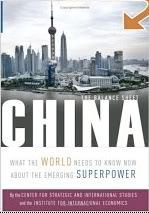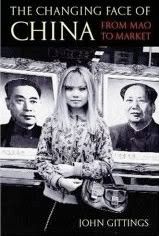Asian club of billionaires
William Pesek
Tuesday, March 13, 2007
Follow the money. It is among the first things young reporters learn about covering business. Nowhere is this bit of wisdom more useful than here in Asia.
Take Forbes magazine's latest listing of billionaires. It showed a healthy increase in Asians, with the number of Indian and Chinese billionaires nearly doubling. India now has the most billionaires among the top 20 after the United States.
"It was a sizzling year in Asia," says Luisa Kroll, associate editor at Forbes.
Yet Forbes' latest tally says even more about what is happening within Asia. India wrestled the top spot in Asia from Japan, which held the title for two decades. India has 36 billionaires with a total of US$191 billion (HK$1.48 trillion); Japan has 24, with a total net worth of US$64 billion.
Following the money offers insights on the changing of the guard in the world's most-vibrant economic region. Japan once dominated Asia, yet developing powers such as India and China are moving to center stage. Expect more of the same in the years ahead.
South Korea, one of Asia's underappreciated investment destinations at the moment, added seven billionaires. That could serve as a reminder that Asia's third-biggest economy is creating more wealth than many appreciate. Warren Buffett is not among those selling Korea short; his Berkshire Hathaway recently disclosed a 4 percent stake in Posco, the world's third-biggest steelmaker.
Australia now has 12 billionaires - led by media magnate James Packer - up from six two years ago. Malaysia has nine, more than double Singapore's four. Taiwan has eight billionaires, while the Philippines and Thailand each have three. Indonesia now has two.
There also are insights into the India-versus-China debate. Virtually everyone seems to believe China's economy will overshadow India's in the decades ahead. Yet as Forbes reminds us, India is doing a more impressive job in creating wealth than Asia's No2 economy.
China has 20 billionaires. Sure, if you combine China's billionaires with Hong Kong's you get 41, but Hong Kong's economy is not really China's. And anyway, the total net worth of China-plus-Hong Kong - US$140 billion - still trails India.
Rich Chinese are more like Russians than Americans; most would rather not be on the Forbes list, as it attracts the attention of tax authorities. Still, you would think that with China's rapid growth and increasing global clout it would boast at least as many billionaires as India.
The message is that China may be growing faster, but India's progress in creating a living, breathing economy and stock market is far more impressive.
How many global investors have not heard of Indian software firms such as Infosys Technologies or Wipro? Ditto for drugmakers like Ranbaxy Laboratories and Dr Reddy's Laboratories.
China's 10 percent-plus growth masks the fact that it is heavily dependent on foreign direct investment. It still mostly serves the demands and needs of foreign-owned firms in foreign markets. There is a dearth of internationally known Chinese companies that operate on a global scale and market their products abroad.
India has daunting challenges to overcome, not the least of which are debilitating bureaucracy, dodgy infrastructure and crushing poverty. Yet it has a powerful entrepreneurial spirit that helped Indian-born Lakshmi Mittal in 2004 leapfrog Li Ka-shing, long Asia's richest man.
China may be getting most of the headlines, yet the steady increase in Indian billionaires is a reminder India's markets are far more developed. Its equity markets are more mature and trusted than China's, a dynamic that is pulling in overseas institutional investment.
The same is true of India's debt markets. China, after all, does not have much of a bond market to speak of. And while India's is a work in progress, its debt market gives expansion-hungry Indian companies a key advantage over Chinese ones.
Of course, the latest Forbes list also exposes the dark side of Asia's rise: a widening gap between extreme rich and extreme poor. Denting the veneer of affluence suggested by surging equity markets is the fact that two-thirds of the world's poor live in the region.
India, where three-quarters of the population survives each day on less than the cost of a Starbucks latte, is a case in point. A Unicef analysis found that nearly 46 percent of India's children below the age of three suffer from malnutrition - compared with roughly 35 percent in sub-Saharan Africa and 8 percent in China.
Even so, there are powerful pockets of innovation in India. Carefully cultivated and harnessed, the wealth created by the entrepreneurial class could spread. While that is still a big "if," the potential exists. So too for China. Its top-down economic model is not encouraging the kind of innovation that creates jobs from the ground up. Then again, China has a knack for surprising skeptics, so stay tuned.
Asia's influence will only grow as investors boost their interests in the region. If you want reassurance, perusing the latest Forbes should do the trick.***
BLOOMBERG




0 Comments:
Post a Comment
Subscribe to Post Comments [Atom]
<< Home